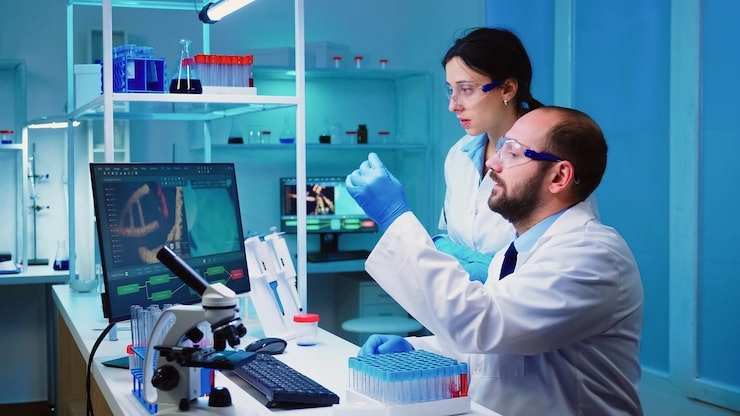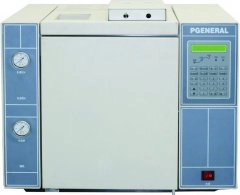If you’re an environmental scientist, water utility manager, or lab worker, you know clean, safe water is a must. Keeping water quality high is not only a rule but also vital for people’s health. Flame emission spectroscopy (FES) is a great tool for this job. It gives exact results for testing elements in water. This blog looks closely at how FES works, its role in water testing, and why it’s key for meeting quality rules. At PERSEE, we’re excited to offer top-notch FES tools to help you reach your goals.

The Principles of Flame Emission Spectroscopy
Flame emission spectroscopy is a method to find and measure certain elements in a sample. It heats the sample in a flame. This excites the atoms, making them give off light at specific wavelengths. Each element’s light is unique, like a fingerprint. This helps scientists spot and count them.
Here’s how it goes: a sample gets sprayed into a flame, often powered by a gas like acetylene. The heat energizes the atoms. As they calm down, they release light. A device called a spectrometer checks the light’s strength and wavelength. This shows which elements, like sodium or calcium, are present and how much. It’s super useful for checking water samples for signs of pollution or quality issues.
The Importance of Monitoring Water Quality
Safe water is crucial for health, industry, and nature. Regular checks make sure water meets safety rules and keeps communities safe from harmful stuff.
Common Contaminants in Water and Their Impact on Health
Water can have many harmful substances, each with risks:
- Heavy Metals (e.g., Lead, Cadmium): These can harm the brain or kidneys, especially in kids.
- Alkali Metals (e.g., Sodium, Potassium): Too much can affect people with heart or kidney problems.
- Nitrates: These can cause a blood issue in babies, reducing oxygen levels.
Finding these early stops health problems and keeps water safe.
Regulatory Standards for Water Quality
Governments and groups like the EPA or WHO set tough rules for water safety. These rules limit how much harmful stuff can be in water to protect people. For example, the EPA’s Safe Drinking Water Act sets limits like 0.015 mg/L for lead and 10 mg/L for nitrates. Meeting these rules needs accurate testing methods like FES to confirm water is safe.
Why Accurate Elemental Analysis is Essential for Compliance
Precise testing makes sure water suppliers follow rules and avoid fines. FES gives dependable data on element amounts. This helps labs prove they meet standards. Accuracy is key for public trust and safety. Even small errors can cause big problems.
The Role of Flame Emission Spectroscopy in Water Testing
FES is a big player in water quality checks. It finds tiny amounts of elements with great precision. Labs use it to test drinking water, wastewater, and nature samples.
Advantages of Using Flame Emission Spectroscopy for Water Analysis
High Sensitivity and Accuracy in Element Detection
FES can spot elements at very low levels, often in parts-per-million (ppm). This is critical for finding tiny amounts of harmful stuff that could be risky. Its precision makes it a go-to choice for meeting rules.
Cost-Effective and Efficient Testing Methodology
FES is cheaper than other methods like inductively coupled plasma (ICP) testing. It uses simpler gear and has lower running costs. Plus, it’s fast. Labs can test many samples quickly. Our tools at PERSEE are built to be quick without losing quality.
Types of Elements Commonly Tested in Water Using This Method
FES is great for finding alkali and alkaline earth metals, such as:
- Sodium (Na): Too much affects taste and health.
- Potassium (K): Shows up in farm runoff.
- Calcium (Ca): Impacts water hardness and industry work.
- Magnesium (Mg): Affects water quality and nature’s balance.
These elements are key signs of water quality and environmental effects.
| Element | Role in Water Quality | Health/Environmental Impact |
| Sodium | Affects taste, health | High levels tied to high blood pressure |
| Potassium | Shows runoff | Too much can harm nature |
| Calcium | Causes hardness | Affects industrial gear |
| Magnesium | Impacts nature’s balance | High levels may change water pH |
Applications of Flame Emission Spectroscopy in the Water Industry
FES is a flexible tool with many uses in water quality work. Its speed and precision make it a must-have in different fields.
Ensuring Safe Drinking Water Supply
City water suppliers use FES to check drinking water for harmful stuff like sodium or heavy metals. Spotting these early keeps water safe to drink. For instance, finding too much sodium helps adjust treatment to meet rules.
Monitoring Industrial Wastewater Discharge
Industries like factories or mining must watch their wastewater to avoid harming nature. FES spots metals like calcium or magnesium in waste. This ensures they follow environmental rules. Our tools are made for fast testing in industrial settings.
Supporting Environmental Protection Efforts
Environmental groups use FES to check natural water, like rivers or lakes, for pollutants. By testing elements like potassium from farm runoff, FES helps protect nature and wildlife. For custom solutions, check out our tools at PERSEE.
PERSEE: A Trusted Supplier for Flame Emission Spectrometers
At PERSEE, we’ve been a top name in lab tools since 1991. We serve labs worldwide with dependable, high-quality solutions. Our flame emission spectrometers are built for the tough needs of water testing.
Overview of PERSEE’s Product Range
We offer FES systems made for water testing, with features like:
- Great Sensitivity: Spots tiny amounts of elements accurately.
- Easy-to-Use Design: Makes work simple for lab workers.
- Strong Build: Lasts long in tough settings.
Our systems work for both small labs and big facilities.
Why PERSEE is Preferred by Industry Professionals
We’re proud of our focus on quality. Certifications like ISO9001, ISO14001, OHSAS18001, and CE back us up. Our worldwide service team ensures quick help and less downtime. We also offer full training through our National Analytical and Testing Personnel (NTC) Training Base. This helps your team shine. Want to know more about our support? Contact us.

Conclusion
Flame emission spectroscopy is a key tool for water quality testing. It offers great precision and speed for spotting important elements. By understanding how it works and its uses, labs can meet rules and keep people safe. At PERSEE, we’re committed to giving you advanced FES tools that make your work easier and more reliable. Visit PERSEE to see how we can help with your water testing needs.
Frequently Asked Questions (FAQs)
What is flame emission spectroscopy, and how does it work?
Flame emission spectroscopy (FES) finds elements in a sample by heating it in a flame. The heat makes atoms give off light. Each element’s light has a unique wavelength. A device measures this light to identify and count elements. In water testing, FES spots metals like sodium or calcium. It gives accurate data for quality checks.
How does flame emission spectroscopy ensure water quality?
FES ensures water quality by finding tiny amounts of harmful stuff, like heavy metals, with great precision. This helps labs confirm water meets safety rules for drinking or nature. Its accuracy spots problems before they harm health.
What are the main advantages of using flame emission spectroscopy over other methods?
FES has several benefits:
- Great Precision: Finds elements at low levels (ppm).
- Affordable: Cheaper gear and running costs than methods like ICP.
- Quick Results: Tests many samples fast for busy labs.
These perks make FES a top pick for water quality testing.









